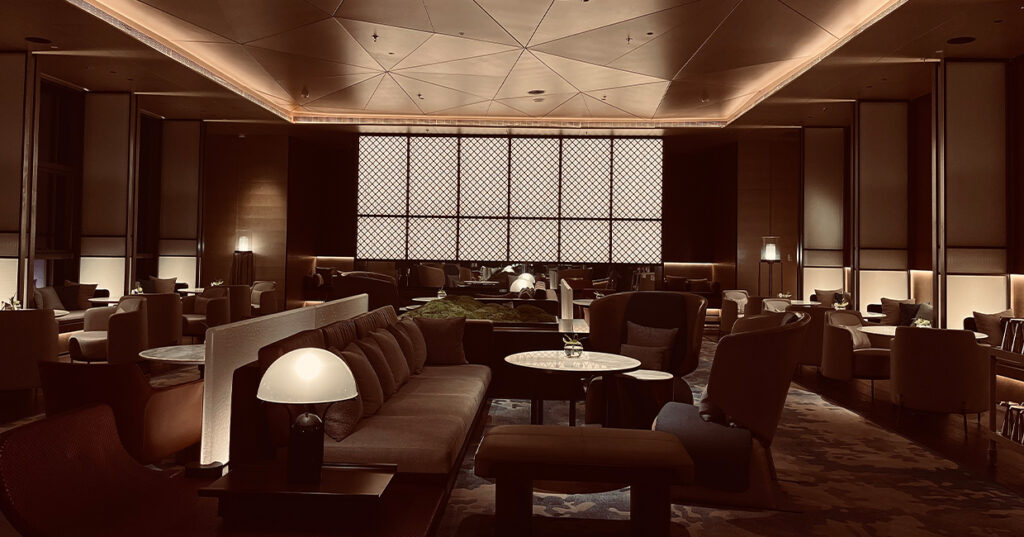As the capital city of China’s central region, Changsha is a city that continues to flourish. Recently, the 196m-high JW Marriott Hotel (Changsha) has joined the landscape as an eye-catching landmark in Star City. Lighting design consultant, WIN, which focuses on high-end projects for international brands, including Marriott, Hyatt, Hilton, Intercontinental, Accor and others, was appointed to undertake the lighting design for this premier hotel.
WIN Design Consultant (Shanghai) prides itself on focusing on the fusion of functional requirements, operational considerations, architectural language, decorative styles and lighting effects, from building exteriors to landscaping, to interior lighting.
The overall design of the hotel is inspired by the natural scenery of Hunan’s famous mountains and rivers. Many details have been considered and included with the vibrant tones of local art and culture. Through the lighting design, the “perfect blend” of oriental aesthetics, modern classics and traditional culture have been achieved, says WIN, suitably interpreting the charm of light and shadow within the architectural space.
As the founder of WIN, Zhang Wei has over 22 years’ experience in lighting design, and has participated in and completed a wealth of large-scale projects including hotels, shopping malls, office buildings and other high-end buildings. The designs include landscape lighting, facade floodlighting and interior lighting. Zhang has won many lighting design awards, and his professional design work and dedicated approach have been recognised and praised by clients worldwide.
Entering the hotel, guests can take the elevator, located through the entrance reception foyer, to the 35th floor Sky Lobby. This area encompasses the cultural elements of old Changsha’s historical buildings in soothing natural tones and simple architectural lines. The lighting designer has used LED strips and wall wash lights to outline the wall paintings in special shapes, while the staggered grille screens separate the urban landscape outside the windows from the classical oriental style inside, which shows a synergy between oriental aesthetics and modernity.
The LED ceiling spotlights and hidden LED light strips play a basic and ambient lighting function, and the light is not visible. Guests can not only enjoy the skyline of Star City, but also have a pleasant time looking across the river from Mount Yuelu.
The hotel has 287 rooms, including 14 suites. The colour palette of the hotel rooms echoes the natural hues of the sky lobby. All rooms are designed without main lights, with LED lights outlining and decorating the bedside, desk or washbasin, creating a relaxing ambience for guests. This is further considered with all rooms featuring panoramic floor-to-ceiling windows to welcome ample natural light. Guest rooms boast impressive views overlooking the historic Xiang River and the Changsha skyline from afar.
The restaurant at the JW Marriott Changsha is also elaborately furnished. Set at a height of 196m, the interior design of the restaurant uses different design elements – stone, fog, green leaves and dragons, forming the memorable characteristics and senses of the interior space. The lighting design enhances this design element by shining the morning light on different materials, using LED strip lights to outline the ceiling clouds like flowing water, while a painting engraved on the wall looks vivid and dynamic under the light, blending with the interior space to achieve a visual feast.
Zhang says that in WIN’s lighting design work – from the pre-project site research and lighting design concept, to the determination of the lighting scheme, the design of lighting drawings, the review of lighting technology, the final implementation to construction, as well as the post-project site lighting and scene system commissioning – its designers followed the whole process meticulously, and with great care and consideration. This is demonstrated by the high degree of unity throughout the design concept and aesthetics.
As a designer in the lighting industry for many years, Zhang also has his own experience in ‘design creativity’ and ‘people and nature’. He believes that in this era, designers should insist on the originality and passion of design to better convey people’s attitude towards life, concern for humanity and expectations of society through projects. Zhang says it is very important to be good at achieving a natural and human-focused lighting atmosphere through design, and to focus on energy saving and environmental protection – and the JW Marriott Changsha Hotel is a perfect example of his philosophy.



